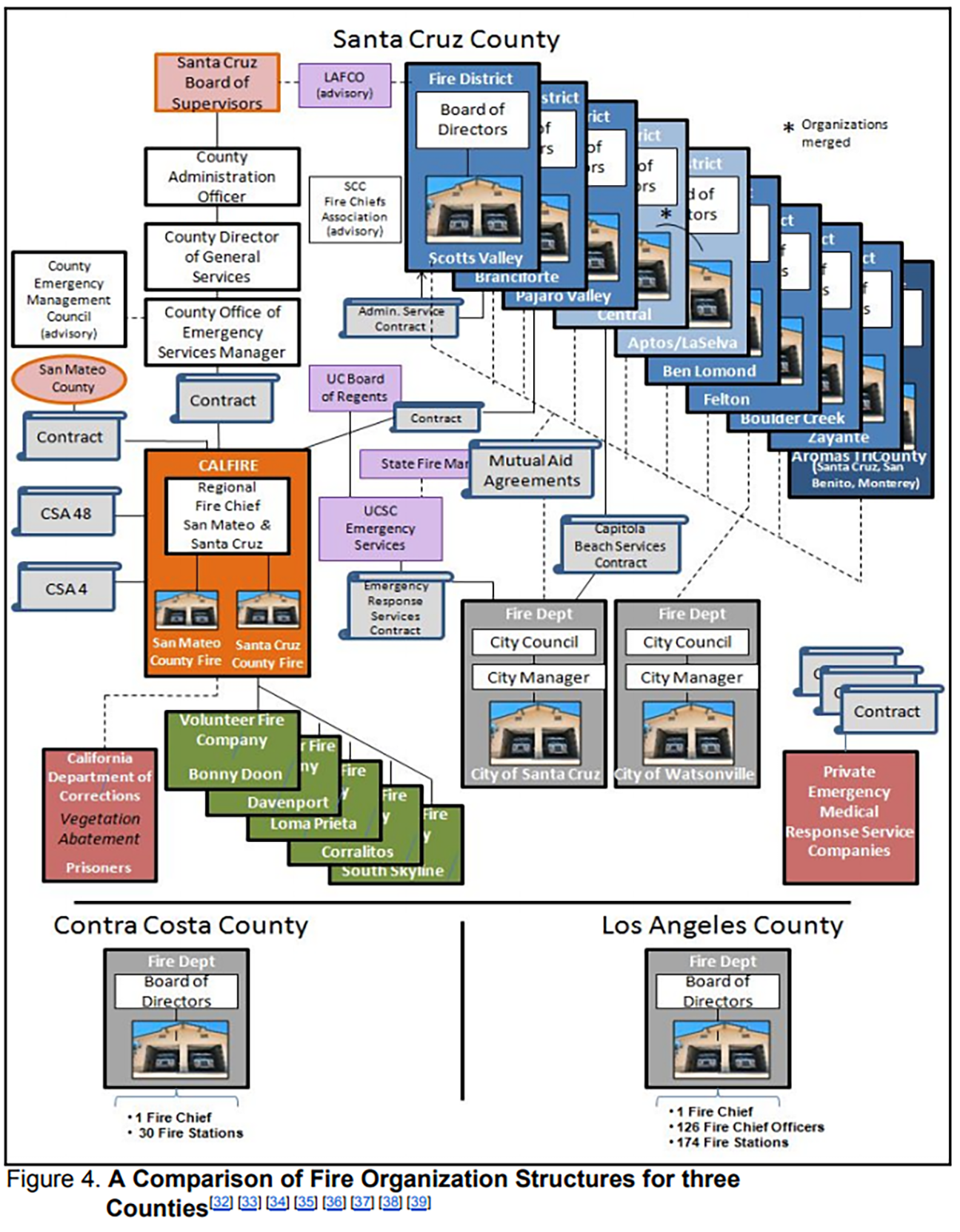Smoke in Monterey County | Joe Livernois
| FEATURED
By Joe Livernois
Crews this week are battling one of the most devastating wildfires in the history of Santa Cruz County, less than two months after the county grand jury admonished the county to improve its firefighting operations.
As of this writing, approximately 48,000 residents from Santa Cruz and San Mateo counties had to move out of their homes swiftly as the out-of-control CZU August Lightning Complex fire swept through brushland and forests. Big Basin Redwoods State Park has been destroyed and at least 50 structures have been lost, though the toll is likely to rise to “triple digits” after a full accounting is made once the smoke clears, a Cal Fire official said Thursday.
Only last month, the Santa Cruz County grand jury released a scathing indictment on fire readiness in the county, warning that “residents are at increased risk of fire danger due to the lack of risk management for wildfire.” It’s unlikely that the systemic improvements recommended by the grand jury might have stopped the devastation currently taking place; lightning-ignited fires throughout California have stretched firefighting resources thin this week. At least 1,700 firefighters were working fires in Monterey and Santa Cruz counties on Thursday, and those fires were only four of approximately 300 fires reported throughout California.
The grand jury entitled its 97-page report “Ready? Aim? Fire! Santa Cruz County on the Hot Seat.”
At issue is the relatively large “wildland urban interface” in Santa Cruz County that seems to be complicated by an overly tangled system of bureaucratic management.
The interface, known in fire-suppression circles as WUI, is defined by the U.S. Forest Service as communities located in areas conducive to large-scale wildland fires with the potential of posing significant threats to human life or property. In Santa Cruz County, more than half of all residents live in WUI zones. The Forest Service reports that Santa Cruz has the largest percentage of WUI of all the California counties.
According to the grand jury, fire prevention and suppression systems in the county are parceled out to what it refers to as a “dizzying nature” of different fire districts, community service areas, state fire battalions and city fire departments. The grand jury noted that counties with much larger populations, like Los Angeles County and Contra Costa, manage to administer complicated fire operations from a single administrative department.
The grand jury even drew up an organizational chart to illustrate the dramatic differences in the three counties.
Enlarge

The grand jury also criticized the county for updating its hazard response plan every five years, saying it should be happening more often due to the large number of people living in WUI. It also noted that, among other things, too many fire agencies in the county are not filing standard response reports, that communication among some agencies and citizens is sporadic, that potential access routes during evacuations are not clearly defined.
Interestingly, the grand jury specifically notes that a wildlife alert camera used as an early detection device, located on a peak near Bonny Doon, does not adequately track the surroundings with unobstructed views. That camera was destroyed Wednesday night by the CZU August Lightning Complex fire; the camera recorded its own immolation.
In the end, the grand jury came up with 30 different findings that noted deficiencies in the overall operations of fire suppression, including inefficiencies in administration, alerts and public education. And it had 25 recommendations for improvements, including a recommendation that the county should consider a governing structure that would tie all fire agencies together “with common leadership, objectives, sharing of data, and maximized use of resources.”
The need for improvements is growing ever more critical, according to the grand jury.
“As the specter of climate change increases, so does the fear and likelihood of more wildfires in populated areas,” according to the report. “It is now abundantly clear that climate change has had, and will continue to have, a powerful impact on large scale fire risk in California.”
In its introduction, the grand jury noted that Santa Cruz County residents “would benefit from greater efficiency and transparency from the multitude of fire agencies in the county, with the goal of improving preparedness and response.”
Have something to say about this story? Send us a letter or leave a comment below.
Related Coverage:
Thousands Flee: Evacuation centers take hundreds of refugees